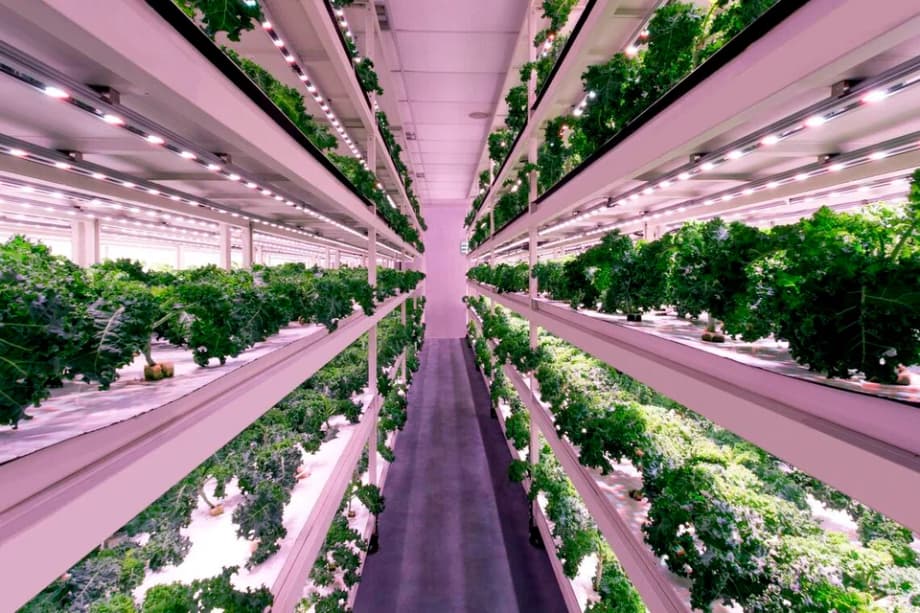Why Singapore is resetting its food production targets
Singapore has replaced its 30 by 30 ambition with two targeted goals for 2035. The government now aims for local farms to supply 20 percent of the country’s fibre consumption and 30 percent of protein consumption by 2035. Fibre covers leafy and fruited vegetables, bean sprouts and mushrooms. Protein covers eggs and seafood. In 2024, local farms supplied about 8 percent of fibre and 26 percent of protein. The revised plan was announced by Minister for Sustainability and the Environment Grace Fu at the Asia Pacific Agri Food Innovation Summit, and it reflects the realities facing farms while keeping food resilience as a national priority.
- Why Singapore is resetting its food production targets
- What the new 2035 goals cover
- Why the 30 by 30 push ran into headwinds
- Four pillars of a refreshed food resilience plan
- Can shared infrastructure lower the cost for farms
- What will move the needle for vegetables, eggs and seafood
- Where alternative protein fits now
- Energy, climate targets and the cost of food resilience
- Metrics and milestones to watch to 2035
- The Bottom Line
Singapore imports most of its food. Limited land, a dense urban setting and scarce natural resources leave the city state exposed when global supplies wobble. The pandemic and the 2022 disruption to live chicken exports from Malaysia showed how quickly prices and availability can shift. Local production does not replace imports, but it acts as a buffer in crises and gives authorities more levers to steady supplies.
The shift away from a single metric toward specific outputs sets clearer targets for what Singapore can grow at scale in its environment. Leafy greens grow well in climate controlled farms and greenhouses. Eggs have proven resilient with strong biosecurity and domestic feed strategies. Seafood can expand through modern aquaculture. Root crops and bulbs are land intensive, so they are excluded from the fibre count. Officials describe the new goals as ambitious but achievable with sharper policies, better infrastructure and steady financing.
What the new 2035 goals cover
In practice, the targets focus on where urban farming techniques offer the best results. Fibre includes leafy and fruited vegetables, bean sprouts and mushrooms. Rooted vegetables and bulbs fall outside the definition, since they need more land and soil depth. Protein includes eggs and seafood, two areas with established local know how. Local egg farms supplied about 34.4 percent of the eggs consumed in 2024, while vegetable output and seafood output fell that year, by about 3 percent and 14 percent respectively, amid restructuring in the sector.
Reaching 20 percent fibre by 2035 requires a fast ramp up from the current 8 percent. Analysts estimate vegetable production must grow by roughly 9.5 percent each year to meet the target. Only about 1 percent of Singapore’s land is set aside for agriculture, so expansion depends on yield improvements, multi story farms, and more efficient greenhouses rather than large new plots.
The protein target starts from a stronger base, and will rely on both aquaculture upgrades and further gains in egg productivity. A number of sea based fish farms have exited or are shifting operations, which has reduced output in the short term. Longer term, closed containment and recirculating systems on land can raise yields and improve biosecurity, though they require significant capital and energy.
Why the 30 by 30 push ran into headwinds
Several forces slowed progress toward the earlier 2030 ambition. Global supply disruptions and inflation after the pandemic lifted costs for feed, energy and construction. Financing for agri tech became harder to secure as interest rates rose. Some high profile projects scaled down or closed. Those setbacks hit output and confidence.
Local conditions added pressure. Land for farms is scarce and leases are short compared with other countries. Many indoor farms depend on constant, high quality electricity for lighting and climate control, which raises operating costs. Open sea aquaculture contends with weather, algal blooms and disease. New environmental standards and licensing changes have pushed some farms to pause, relocate or exit. Around a quarter of sea based farms left the sector in 2024.
Alternative protein was once expected to carry more of the load by 2030. It remains promising, but cultivated and plant based products still face high production costs and modest consumer acceptance. Authorities have kept research support in place, while making clear that alternative protein is not part of the short term food security targets.
Four pillars of a refreshed food resilience plan
The government’s refreshed approach, called Singapore Food Story 2, is built on four pillars. It seeks to grow the right foods locally, diversify import sources, maintain strategic stockpiles and build deeper global partnerships. The aim is a resilient mix rather than chasing a single headline number.
Stockpiles and supply agreements
Stockpiles focus on items with longer shelf life such as rice and canned food, which can be stored and rotated. On the trade side, new partnerships are meant to keep supplies moving during crises. Singapore has pursued agreements with countries such as Vietnam and New Zealand to secure steady flows and to discourage export curbs during tight markets. The 2022 halt in live chicken exports from Malaysia showed how quickly policies across borders can affect daily staples.
Import diversification continues as a core safeguard. Sourcing from more suppliers spreads risk across regions. Local production then fills critical gaps when disruptions occur, while stockpiles buy time to adjust.
Can shared infrastructure lower the cost for farms
Cost remains the major obstacle for urban farms. To reduce capital and operating costs, the Singapore Food Agency is studying a multi tenant facility that would host several farms under one roof. Shared utilities, cold rooms, packing and processing lines, waste treatment, logistics and on site quality labs could deliver economies of scale. A controlled environment can also reduce losses from pests and disease.
The feasibility study is expected to take about 12 to 18 months. Authorities have started to sound out potential tenants. The idea is separate from the planned high tech agri food hub at Lim Chu Kang, which has faced delays. If the shared facility goes ahead, it could shorten the time to set up a farm, cut red tape and spread fixed costs across multiple players.
Some industry voices argue that treating core farm infrastructure as public utilities could further lower costs. Under that model, the state would finance common services and lease space while farmers focus on production and customers. It is an approach used in transport and utilities, and it may suit a city where land and power are the big cost drivers.
What will move the needle for vegetables, eggs and seafood
For vegetables, steady gains will come from better seeds, climate controlled greenhouses, water efficient hydroponics and tighter pest management. The new targets exclude root vegetables and bulbs, which are harder to grow at scale in Singapore. For leafy and fruited vegetables, the path is clearer. Yields per square meter have climbed in recent years as farms fine tune lighting, nutrients and airflow.
Eggs are the bright spot today. Local farms already supply roughly a third of consumption, and there is room to increase output with larger and more efficient hen houses, disease monitoring and secure feed supply chains. Backup power and on farm solar can help manage energy risks. Authorities have plans to support flock renewal and to link farms with institutional buyers so that volume is predictable.
Seafood will take time to rebuild after a year of transition. Movement away from open sea cages toward land based and closed containment systems can lift yield and reliability, but it demands capital, technical expertise and skilled labor. Programmes that supply baby fish to farmers and offer technical support on water quality can shorten the learning curve.
Where alternative protein fits now
Alternative protein, including cultivated meat and plant based products, will not count toward the short term food security goals. Production costs remain high, and many consumers still prefer traditional options. Singapore continues to support research and regulatory work in this field, and the country has experience approving novel foods. For food resilience between now and 2035, the focus remains on vegetables, eggs and seafood.
Over a longer horizon, lower production costs and improved taste could draw more consumers to these products. Companies based in Singapore may first find success in export markets before large domestic adoption. For now, alternative protein sits outside the targets but inside the innovation pipeline.
Energy, climate targets and the cost of food resilience
Energy is the biggest line item for many urban farms. Singapore has set a national goal to cut greenhouse gas emissions to between 45 million and 50 million tonnes by 2035 on the way to net zero by 2050. Today, the power system relies mainly on natural gas, while solar provides a small share because land and roof space are limited. The government is working on clean energy imports, hydrogen trials and research into advanced nuclear options to reduce emissions over time.
As the grid decarbonizes, indoor farming will benefit from cleaner electricity. Until then, higher carbon taxes and global fuel price swings can raise operating costs. That tension sits at the center of the new targets. The country wants more local produce for resilience, yet it must keep farms viable when energy is expensive. Efficient equipment, heat recovery, and on site solar where possible can blunt those costs.
Metrics and milestones to watch to 2035
The next year and a half will bring the feasibility study for a shared facility, site choices and funding models. Investors and farmers will watch for clearer land tenders, simpler licensing timelines and reliable utility pricing. Year by year, the share of local fibre and protein in consumption will show whether farms are scaling. For vegetables, yields per square meter and energy per kilogram will be key indicators. For eggs, biosecurity, feed stability and the share of national demand met by local farms will matter. For seafood, conversion from open sea to land based systems and survival rates will show progress.
On the trade side, new supply agreements, more diverse import sources and smooth stockpile rotation will indicate resilience. The test will come when the next disruption hits. If prices and supplies hold steady with fewer abrupt limits, the combined strategy will be doing its job.
The Bottom Line
- Singapore has replaced the 30 by 30 ambition with targets to produce 20 percent of fibre and 30 percent of protein by 2035.
- Fibre covers leafy and fruited vegetables, bean sprouts and mushrooms. Protein covers eggs and seafood.
- In 2024, local farms supplied about 8 percent of fibre and 26 percent of protein. Local egg farms supplied about 34.4 percent of eggs consumed.
- Vegetable output and seafood output fell in 2024, and around a quarter of sea based fish farms exited the sector.
- Only about 1 percent of land is set aside for agriculture, so growth depends on yield gains and efficient facilities.
- The refreshed plan rests on four pillars, growing local, diversifying imports, stockpiling and deepening global partnerships, with recent deals struck with countries such as Vietnam and New Zealand.
- The Singapore Food Agency is studying a multi tenant facility with shared services. A feasibility study is expected to take about 12 to 18 months. This would be separate from the Lim Chu Kang hub.
- Alternative protein is excluded from near term food security targets because of cost and consumer acceptance, though research continues.
- Analysts estimate vegetable output must rise by about 9.5 percent each year to meet the fibre goal by 2035.
- Singapore’s 2035 emissions target is 45 to 50 million tonnes. Energy costs and grid decarbonization will influence the viability of energy intensive urban farms.




